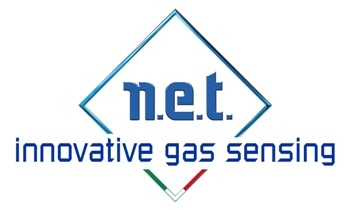A Non Dispersive Infrared (NDIR) gas sensor working principle is based on the ability of particular molecules to absorb light at particular wavelengths (or “color”) that are characteristic of their molecular configuration.
.jpg)
The absorption features are defined as molecular vibrational energies related to stretching, bending or rotations, and are dependent on the molecular make-up of the gas.
Overview of Infrared Gas Sensors
For IR energy to be absorbed, that is, for vibrational energy to be transmitted to the molecules, the frequency must be aligned with the frequency of the method of vibration. As such, particular molecules absorb IR radiation at exact frequencies and each gas has a distinctive and clearly defined light absorption curve in the infrared spectrum.
When IR radiation passes through a volume holding a specific gas, only those frequencies which are matched to the vibration mode are absorbed, while the remaining light is transferred without intrusion. For this reason, the incidence of a specific gas leads to distinguishing absorption bands.
.jpg)
Infrared absorption bands of all major trace gases https://commons.wikimedia.org/wiki/File:Spectralcalc_infrared_bands.png
The Beer-Lambert Law, a fundamental law of physics, links the attenuation of light to the features of the material (gas, in this instance) through which the light is being transmitted. This law states that the intensity of an NDIR sensor signal is relative to:
- the strength of the beam of IR light;
- the precise absorbance features of the molecules of the gas being measured;
- the length of the optical path (the distance covered by the light through the volume);
- the exact concentration of the gas being measured.
Through awareness of items 1, 2 and 3, it is possible to determine item 4, the actual concentration.
Working Principle of Infrared Gas Sensors
Infrared gas sensors make use of a dual wavelength method, employing an IR energy source directed at a pair of pyroelectric detectors, each attuned to distinct ranges of wavelengths in the spectrum’s infrared portion.
A Pyroelectric detector is an infrared sensitive optoelectronic component which is specially designed for the detection of electromagnetic radiation in a wavelength range from 2 to 14 µm.
The Active detector is sensitive in the range of absorption of the target gas, while the Reference detector wavelength bands are selected in an area of the IR spectrum where a low level of absorbance of the target gas takes place.
The differential absorption method, in which the target gas is continuously monitored with regards to a reference measurement, decreases the impact of background distortions resulting from interactions with other gases, source aging or optical surface contamination.
Both Active and Reference channels are similarly diminished when impurities are detected within the IR beam or when the source deteriorates over time.
.jpg)
IR gas sensor principle
Benefits of Infrared Gas Sensors
Infrared gas sensing delivers a range of benefits beyond other traditional methods:
- It can function inside oxygen-deprived or oxygen-enriched areas, which is a major advantage for combustible gas detection
- It is highly selective for the target gas and has minimal cross-sensitivity with other gases
- It is resistant to corrosion and immune to poison
- It is fail-safe, since events such as beam block or failed detectors and sources are exposed
- It does not require regular calibration, since aging effects are restricted by differential absorption method

This information has been sourced, reviewed and adapted from materials provided by Nano Environment Technology (N.E.T).
For more information on this source, please visit Nano Environment Technology (N.E.T).